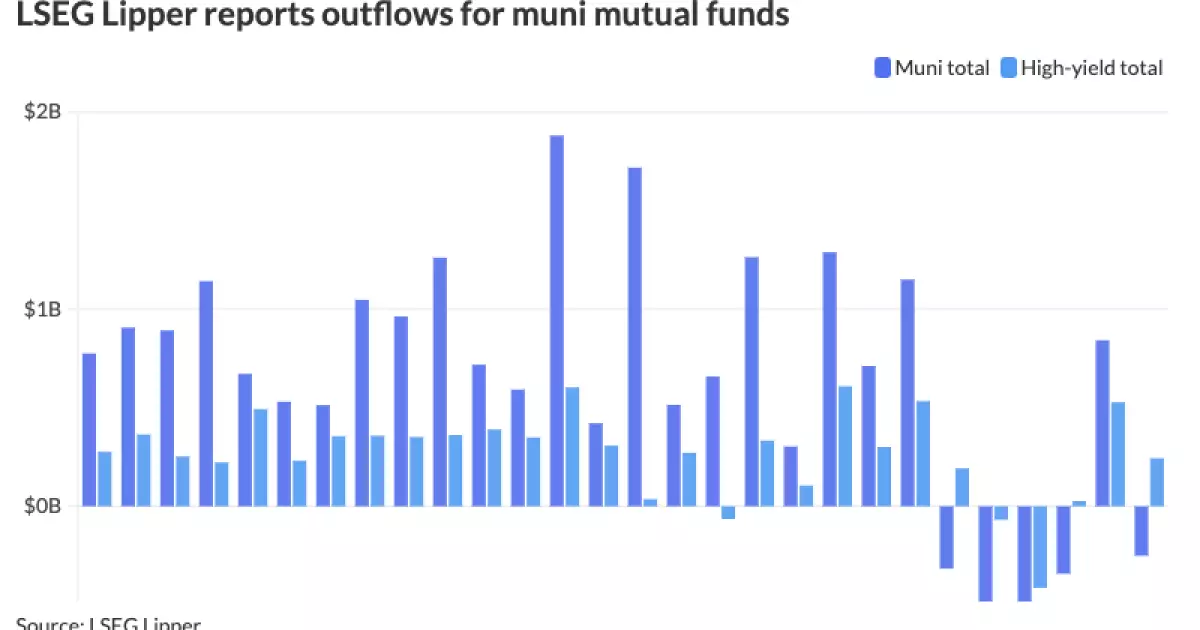The recent trends in the municipal bond market indicate a complex interplay of demand, yield changes, and market sentiment. With the upsizing of major transactions, like the Triborough Bridge and Tunnel Authority’s $1.6 billion bond issuance, the municipal segment has demonstrated resilience and a slight firming in pricing, suggesting a careful recalibration of investor perspectives amid fluctuating economic variables.
On a macro scale, the municipal bond market is reacting to broader economic indicators, notably recent decreases in U.S. Treasury yields and declines in equity performance. These movements can have a ripple effect on municipal bonds, which typically function as a safe haven in tumultuous market conditions. The municipal-to-U.S. Treasury (UST) yield ratios reflect investor sentiment: for instance, as of Thursday, the two-year ratio was pegged at 67%, indicating a modest spread that suggests bond attractiveness in contrast to taxable USTs. Conversely, the yields across various maturities are collectively at their highest levels in over a year, signaling broader economic pressures.
Market analysts, including Kim Olsan from NewSquare Capital, have indicated that while municipal yields have firmed slightly, the overall climate remains one of caution. She noted a significant uptick in two-way flows—indicating both purchases and sales—that suggests investors are beginning to recognize the value in higher yields from quality credits. This dual movement reflects a healthy market where fluctuations in supply and demand can create opportunities for savvy investors.
Delving deeper, the yield spreads particularly in the short-call and short-maturity segments are noteworthy. Olsan mentioned that in recent trades, certain Ohio state general obligation bonds yielded a 3.20% return, reflecting a spread of about 25 basis points above noncallable equivalents. Such discrepancies provide attractive entry points for investors looking to enhance their portfolios, particularly in an environment of increased yield.
In the long-term segment, a notable transaction involved American Municipal Power in Ohio, where bonds due in 2046 offered a robust yield of 4.45% with a 4.54-year duration. Such trades come with increased risk but offer compelling rewards for investors willing to navigate them. Market volatility remains a concern; however, targeted buying, particularly of higher-quality credits, suggests confidence lingering among certain factions of the investing populace.
The landscape has complicated further due to a recent downgrade from S&P Global Ratings concerning select Los Angeles Department of Water and Power bonds, which resulted in wider spreads—around 10 basis points—over the 10-year horizon. This incident underscores the sensitivity of municipal bonds to credit ratings, highlighting that even slight shifts can significantly alter market dynamics and investor strategies.
This volatility leads to heightened scrutiny, with the attention now focused on bidding patterns that could forecast broader market trends. Even though raised bids suggest liquidity and interest, they haven’t yet reached a level that indicates immediate danger. Olsan expresses caution, noting that although there are elevated levels of bids wanted, they are not worrisome enough to trigger alarm bells.
The primary market has been brimming with activity, as demonstrated by the successful pricing of substantial bond offerings like the Triborough Bridge and Tunnel Authority bonds and the University of Colorado’s enterprise revenue bonds. The latter saw significant tranches priced aggressively, offering yields across various maturities that suggest a healthy receptiveness from institutional investors.
Additionally, the market dynamics are demonstrated by high-yield fund flows that have experienced robust inflows, juxtaposed against substantial outflows from tax-exempt municipal money market funds. The figures reveal that while overall interest may be shifting, sectors like high-yield municipal funds are gaining traction, indicating selective investor confidence.
In summation, the municipal bond market is navigating a landscape marked by rising yields and evolving investor attitudes. With key transactions underscoring a resilient market and movements indicating cautious optimism, investors must remain vigilant. As the market response to economic data continues to develop, the intricate dance of supply, demand, and credit ratings will dictate future trends. Ultimately, discerning investors who can accurately gauge these variables will likely find ample opportunities in the ongoing evolution of the municipal bond market.


Leave a Reply